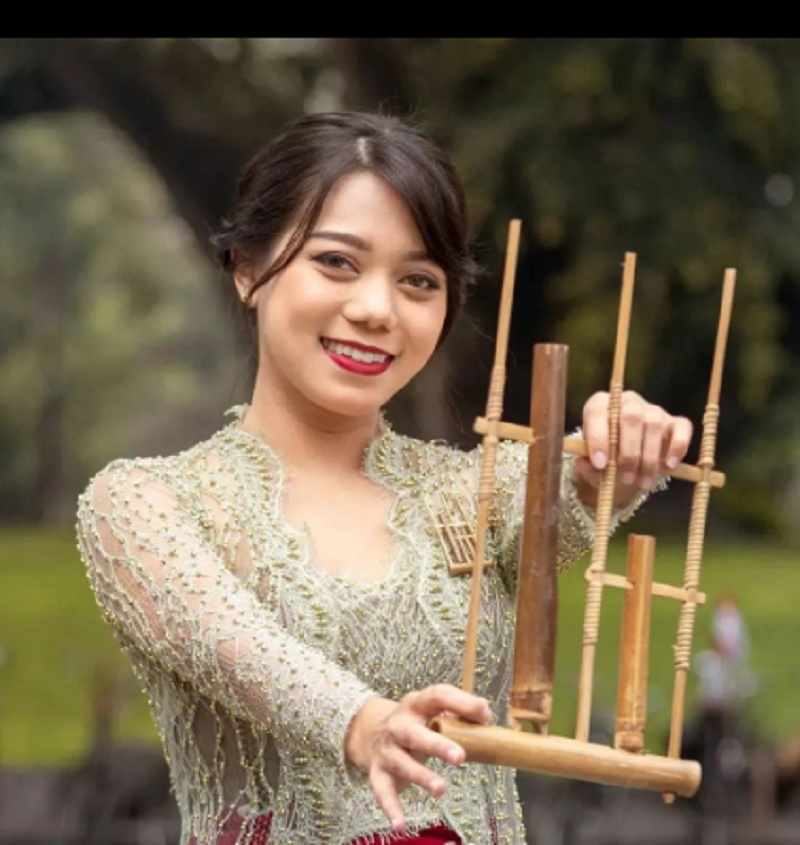National Music Day in Indonesia, March 9. Diving into the Richness of Indonesian Traditional Music: Gamelan and Angklung, Unique Musical Instruments that are Globally Unique!
 |
| Angklung, Indonesian traditional music |
There are many types of traditional musical instruments in Indonesia with unique names and uses in each region. However, this article only discusses two unique musical instruments that are played together.
The gamelan and angklung musical instruments are found in Java, Madura, Bali, and Lombok. Both have their own uniqueness in sound and how to play them.
The gamelan comes from the Javanese word "Gamel" which means a percussion instrument. Made of wood and gangsa, a type of metal mixed with copper or tin and rejasa.
One of the uniqueness of gamelan is that it must be played together. The accompanying musical instruments of the gamelan include kendang, bonang, panerus, gender, gambang, suling, and gong.
Initially, the gamelan instrument was created in the 8th century, based on the reliefs found in Borobudur Temple.
Initially, the gamelan instrument was created in the 8th century, based on the reliefs found in Borobudur Temple.
In the temple reliefs, there are several musical instruments consisting of kendang, bamboo flutes, zithers, strings that are bowed and plucked, as well as bells played by several players. Since then, these musical instruments have been made into Javanese gamelan.
During the development of Hindu-Buddhist culture in the Majapahit Kingdom, gamelan was introduced to the Javanese people.
During the development of Hindu-Buddhist culture in the Majapahit Kingdom, gamelan was introduced to the Javanese people.
According to Javanese beliefs, gamelan was created by Sang Hyang Guru Era Saka, a god who ruled over all of Java. This god created the gong musical instrument, which was used to call the gods.
 |
| Gamelan. Foto: Pixabay.com/Joko_Narimo |
Other Javanese arts include the Suara art consisting of sinden, bawa, gerong, sendon, and celuk; the Pedalangan art consisting of wayang kulit, wayang golek, wayang gedog, wayang klithik, wayang beber, wayang suluh, and wayang wahyu; and the Dance art consisting of serimpi, bedayan, golek, wireng, and pethilan dance.
Besides being used to accompany various Javanese arts, gamelan is also often used in the palace environment.
Besides being used to accompany various Javanese arts, gamelan is also often used in the palace environment.
Especially during official events involving royal members such as weddings. When Islam began to enter the archipelago, especially Java, gamelan music played a role in spreading the religion.
Currently, there are still many Javanese traditional rituals that use gamelan as their accompanying music, both with original equipment and players or in digital instrument form, such as wedding rituals.
Currently, there are still many Javanese traditional rituals that use gamelan as their accompanying music, both with original equipment and players or in digital instrument form, such as wedding rituals.
This indicates that gamelan music is still popular among the people. Even foreign tourists often make gamelan music art as an interesting tourist object when visiting Indonesia.
Besides gamelan, another musical instrument from Java that has unique sound and playing methods is angklung. Angklung is a traditional musical instrument originating from West Java, made of bamboo, and played by shaking it to produce sound.
Besides gamelan, another musical instrument from Java that has unique sound and playing methods is angklung. Angklung is a traditional musical instrument originating from West Java, made of bamboo, and played by shaking it to produce sound.
The vibration of sound in the arrangement of notes 2, 3, and 4 is present in every size of angklung, both large and small.
Although its shape is very simple, this musical instrument will only produce beautiful rhythm songs if played together. The origin of angklung began from the life of the Sundanese people, who were agrarian with rice as their staple food.
Although its shape is very simple, this musical instrument will only produce beautiful rhythm songs if played together. The origin of angklung began from the life of the Sundanese people, who were agrarian with rice as their staple food.
This gave birth to a myth of using this musical instrument as a tool to attract Dewi Sri (Goddess of Rice) to come down to earth, so that people's crops could grow well. The use of angklung then developed into a morale booster during the Sunda kingdom and the Dutch East Indies colonial.***